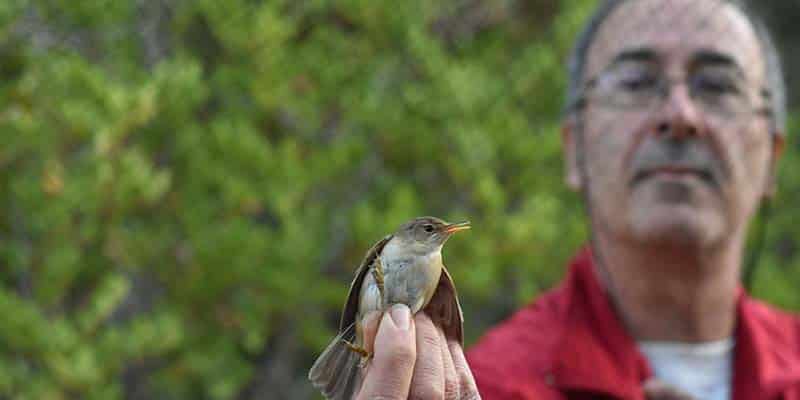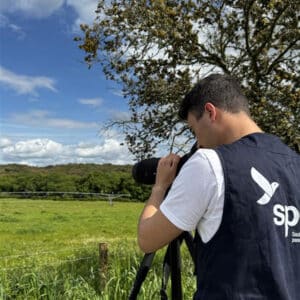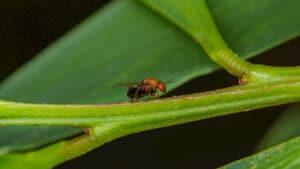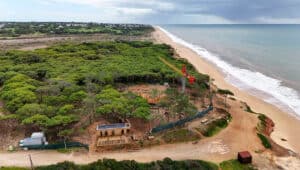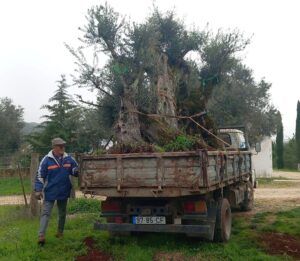António Manuel Marques, 58, from Faro is one of Portugal’s better-known amateur bird ringers. He is also the coordinator of a scientific bird ringing station at Fonte da Benémola in Loulé and one of the veterans behind the birdwatching festival that is held every year in Sagres (October 10-13).
In a recent interview with Barlavento newspaper, he provided some insight into the delicate skill of bird ringing and why it is so important for us to understand more about it. “Each bird tells a story,” he said.
Birds are caught using nets that are purposefully created not to hurt them. They are then collected to undergo a “thorough observation”. If they are already ringed, Marques will register the information and share it online. In Loulé, he has already found birds that had been ringed in The Netherlands, Czech Republic, Poland, Sweden, Russia and Norway.
“The yellow-browed warbler (Phylloscopus inornatus) is a bird that nests in the Siberian snow forest and should migrate to Asia. But in the last five years, I have witnessed that this species has been seeking the Algarve to spend winter. I believe it is a new migratory route, probably because it finds better conditions here. It is no longer considered a rare bird. When spring arrives, it returns to Siberia,” he said.
As Marques explained, there are “always surprises when out on the field”. In June, for example, he came across a golden oriole (Oriolus oriolus) which he had ringed himself in 2016.
But what happens when he finds a bird that doesn’t have a ring? Marques measures its wingspan, determines its sex and age, studies the state of its plumage, its fat and muscle levels and its weight.
“We have a sheet with 50 categories in which we register each bird. Their details are included in an online database which is constantly being updated,” he said, adding that the information is critical to determine how long these birds survive and how well they are reproducing.
In fact, Marques believes that birds also help signal the effects of climate change.
“For example, there are certain species that no longer have to migrate to their previous nesting areas. We have populations of robins and blackcaps that nest here in Portugal and that never used to before,” he said.
Algarve needs more bird ringing stations
Marques would like to see more bird ringing stations opening in the Algarve. Besides Fonte da Benémola, there are also stations at Fonte Filipe in Querença (Loulé) and Quinta da Rocha in Alvor (Portimão).
“It would be very good to have new people interested in this activity, because we could collect more information. I find it unbelievable that we only have three bird ringing stations because the Algarve is an area visited by millions of birds each year,” said the bird lover, adding that the west coast, Ria Formosa and Caldeirão mountains would be “excellent locations”.
“There are very few of us in Portugal. Maybe it is because of a lack of information or knowledge,” Marques said.
“This takes up a lot of time and the equipment is expensive. The Institute of Nature and Forest Conservation, within its possibilities, gives us the rings, which doesn’t happen in other countries. It is a great help, but I think local councils should encourage us and create financial support,” he said, citing the support that is already provided by Loulé council and the union of parishes of Querença, Tôr and Benafim.
Marques is also delighted by the increasing popularity of birdwatching in the Algarve, which he considers an ideal destination for the activity.
“There are many bird hides in the region today. I commend the regional tourism board for its efforts. It is no longer necessary to disturb birds at salt pans or in wetlands during their resting times. There could be more hides, but the ones that already exist guarantee some peace for the birds,” he said.
Also part of Marques’ busy schedule are visits to schools in Loulé which allow him to teach younger generations about the importance of birds to ecosystems and show them some of the species that live or fly through the Algarve.
Original article written by Bruno Filipe Pires for Barlavento newspaper.
Photos: BRUNO FILIPE PIRES/OPEN MEDIA GROUP






